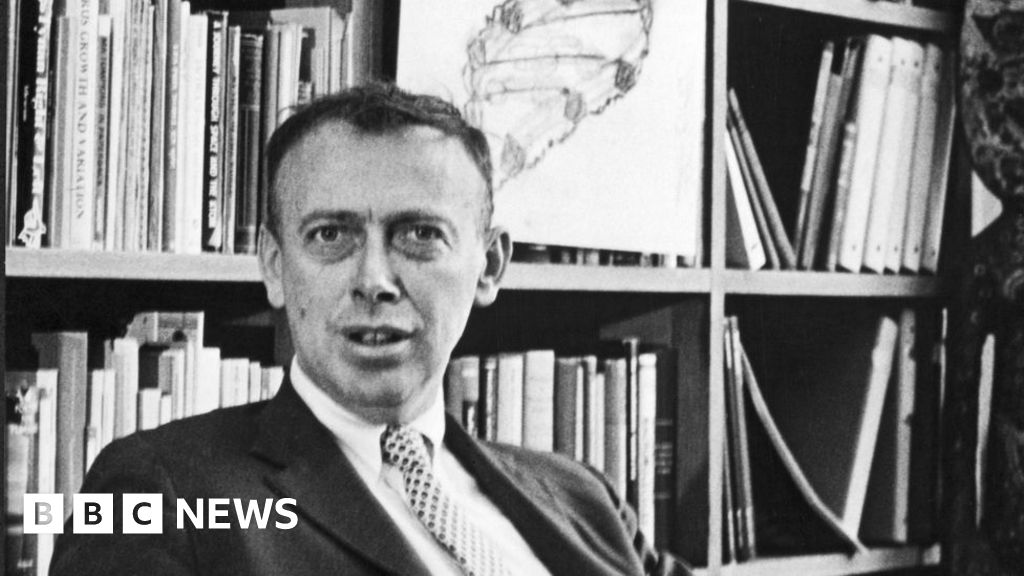Science
Unveiling DNA: Watson and Crick’s Historic Race to Discovery

The quest to unravel the structure of DNA reached a pivotal moment in 1953 when scientists James Watson and Francis Crick successfully described the double helix structure of this fundamental molecule. Their groundbreaking work laid the foundation for modern genetics and has had lasting implications across various scientific fields. Recently, a collection of photographs and letters from the archives has shed new light on the fierce competition and collaboration that characterized this monumental discovery.
Rivalry and Collaboration in Cambridge
Both Watson and Crick were affiliated with Cambridge University, where they were driven by the ambition to solve one of biology’s greatest mysteries. Their collaboration was not without challenges, as they faced competition from other esteemed scientists, including Rosalind Franklin, whose X-ray diffraction images of DNA played a crucial role in revealing its structure. These images, captured at King’s College London, provided vital insights that Watson and Crick utilized in their model.
The race to discover DNA’s structure was characterized by intense rivalry. In the early 1950s, numerous researchers were attempting to decode the molecular configuration of DNA. Watson and Crick’s determination, combined with their access to Franklin’s findings, propelled them ahead in this scientific contest. They famously built their model of DNA using wire and cardboard, which illustrated the helical structure that would change the course of biology forever.
The Legacy of Their Discovery
On April 25, 1953, Watson and Crick published their pivotal paper in the journal *Nature*, introducing the world to the double helix model of DNA. This publication not only marked a significant milestone in molecular biology but also established a framework for genetic research that continues to evolve today. Their discovery has since paved the way for advancements in various fields, including genetics, biotechnology, and medicine.
The legacy of Watson and Crick’s work endures, with their model serving as a foundation for understanding genetic inheritance and the molecular basis of life. The impact of their research extends beyond the laboratory, influencing ethical debates surrounding genetic engineering and biotechnology. Today, the exploration of DNA continues to unfold, fueled by the pioneering spirit of Watson and Crick.
As new technologies emerge, the fundamental principles established by the duo remain relevant, guiding scientists as they delve deeper into the complexities of genetics. The photographs and letters from the archives not only highlight the challenges they faced but also capture the excitement and urgency of scientific discovery during that era.
In conclusion, the journey of James Watson and Francis Crick to uncover the secrets of DNA is a testament to human curiosity and perseverance. Their work, fueled by competition and collaboration, transformed our understanding of life itself, leaving an indelible mark on science and society.
-

 World4 months ago
World4 months agoScientists Unearth Ancient Antarctic Ice to Unlock Climate Secrets
-

 Politics1 day ago
Politics1 day agoSecwepemc First Nation Seeks Aboriginal Title Over Kamloops Area
-

 Entertainment4 months ago
Entertainment4 months agoTrump and McCormick to Announce $70 Billion Energy Investments
-

 Lifestyle4 months ago
Lifestyle4 months agoTransLink Launches Food Truck Program to Boost Revenue in Vancouver
-

 Science4 months ago
Science4 months agoFour Astronauts Return to Earth After International Space Station Mission
-

 Technology2 months ago
Technology2 months agoApple Notes Enhances Functionality with Markdown Support in macOS 26
-

 Top Stories4 weeks ago
Top Stories4 weeks agoUrgent Update: Fatal Crash on Highway 99 Claims Life of Pitt Meadows Man
-

 Sports4 months ago
Sports4 months agoSearch Underway for Missing Hunter Amid Hokkaido Bear Emergency
-

 Politics3 months ago
Politics3 months agoUkrainian Tennis Star Elina Svitolina Faces Death Threats Online
-

 Politics4 months ago
Politics4 months agoCarney Engages First Nations Leaders at Development Law Summit
-

 Technology4 months ago
Technology4 months agoFrosthaven Launches Early Access on July 31, 2025
-

 Top Stories2 weeks ago
Top Stories2 weeks agoFamily Remembers Beverley Rowbotham 25 Years After Murder













